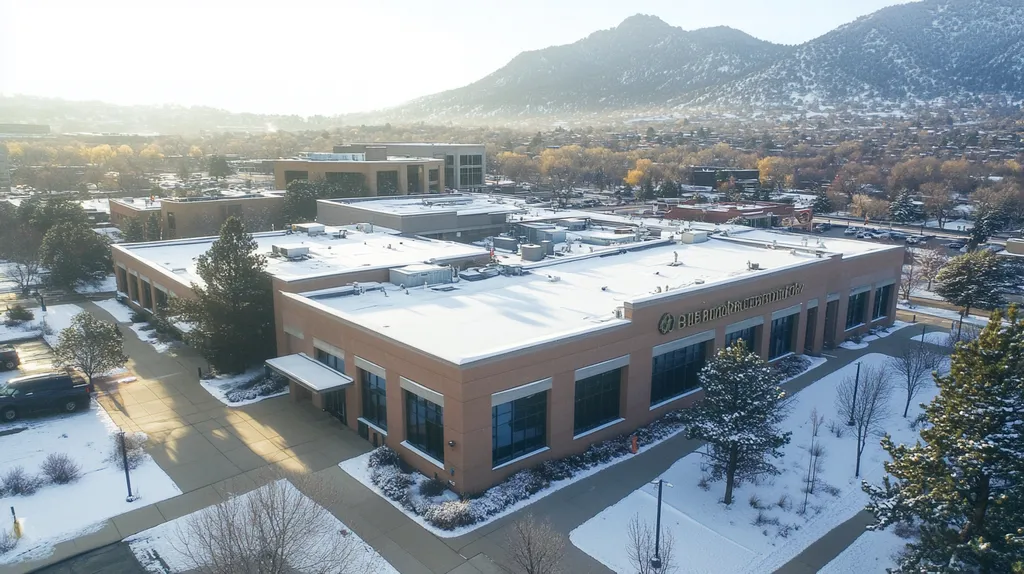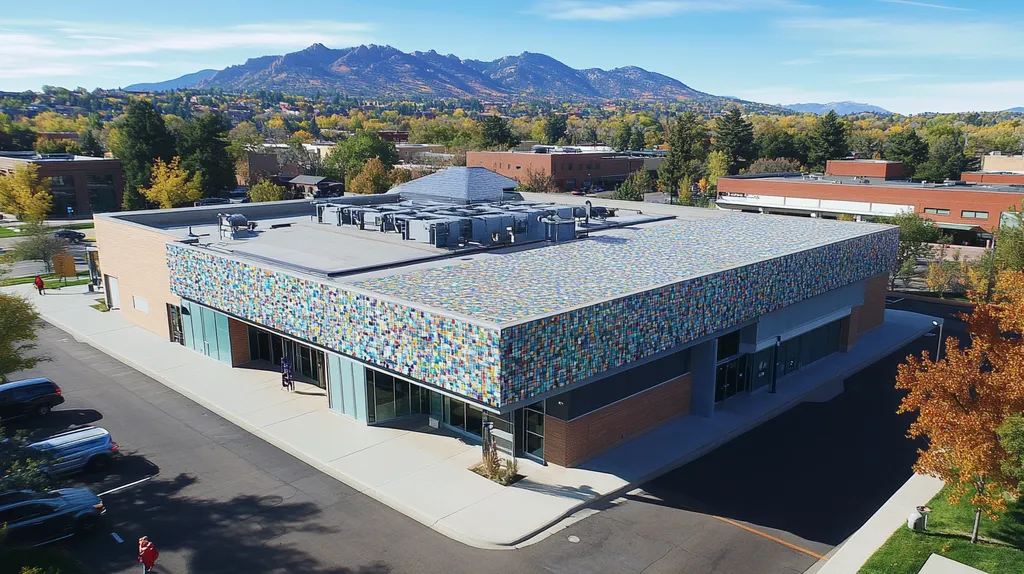In commercial roofing projects, poor scheduling coordination leads to an average of 30% increased project costs and significant safety risks, according to the Construction Industry Institute. These delays often cascade across multiple contractors, creating a domino effect of missed deadlines and budget overruns.
For property owners and facility managers, mastering the intricacies of contractor scheduling can mean the difference between a smooth installation and months of costly setbacks. Understanding how different trades interact and establishing clear communication protocols becomes essential for project success.
This comprehensive guide examines the critical aspects of scheduling coordination, from basic principles to advanced strategies, providing actionable insights for optimizing multi-contractor roofing projects.
SECTION 1: THE BASICS EXPLAINED
Effective scheduling coordination among on-site contractors is essential for maintaining a smooth workflow during roofing projects. Delays in these projects can lead to increased costs, safety risks, and potential damage to buildings. According to a survey by the Construction Industry Institute, poor communication is responsible for up to 30% of project delays. By learning to coordinate schedules effectively, property owners can not only ensure a streamlined roof installation process but also contribute to the overall success of the construction project.
What It Is (In Plain Language)
Scheduling coordination on construction sites refers to the organized timing of various activities to minimize conflicts. This involves coordinating the roofing project’s timeline with the work of other contractors, such as electricians or HVAC technicians. For example, if roofing crews begin their work while plumbing installations are still ongoing, it can unintentionally damage the roof.
Effective coordination allows each contractor’s work to flow smoothly, reducing downtime and minimizing the risk of miscommunication. It fosters a collaborative environment where every contractor understands their role and timing within the project.
This process also requires clear timelines and an understanding of the interdependencies between different trades. By prioritizing these elements, facility managers can enhance project efficiency and achieve improved results.
In commercial roofing, strong scheduling coordination can dramatically impact project outcomes, transforming potential setbacks into successes. By focusing on this critical aspect, property owners can reduce risks and optimize their investments.
Why It Matters (To Your Building)
Proper scheduling coordination is crucial for safeguarding the integrity of the building. Delays stemming from uncoordinated schedules can expose the roofing system to the elements, leading to costly repairs. Research by the National Roofing Contractors Association shows that even minor delays can significantly escalate repair costs and prolong project timelines.
Moreover, a lack of scheduling clarity increases safety hazards. Equipment and materials may obstruct pathways, creating potential risks for workers. A well-structured schedule ensures that all contractors know when and where to operate, thereby minimizing accidents.
From a facility management perspective, poor scheduling can strain relationships with contractors and lead to frustration. Continued delays foster a cycle of blame among workers, undermining the overall morale of the project team.
Ultimately, effective scheduling coordination not only protects the structure and its workforce but also nurtures positive relationships among all parties, enhancing the prospects for future collaborations.
How It Works
The scheduling coordination process starts with a well-defined project timeline and communication plan. Facility managers should engage all contractors early to cultivate a shared understanding of the project’s scope and deadlines. Conducting regular meetings ensures all parties remain aligned.
Creating a master schedule that includes milestones for each trade is crucial. This schedule should clearly outline start and finish dates for every contractor. Tools like project management software can help track progress and promptly address any necessary changes.
Establishing a reliable communication system for reporting delays and issues is vital. Contractors must promptly inform others of any setbacks to make adjustments that minimize disruptions.
Additionally, regular on-site coordination meetings are essential for addressing potential conflicts as the project unfolds. These discussions can help resolve issues before they escalate into significant delays, fostering a cooperative atmosphere.
By implementing these strategies effectively, project efficiency is enhanced, leading to higher quality roofing installations that ultimately benefit both the building and its occupants.
SECTION 2: PRACTICAL APPLICATIONS
Coordination between roofing contractors and other trades is essential for keeping projects on track and within budget. Research indicates that miscommunication among contractors is a leading cause of delays in 30% of commercial construction projects. To prevent these setbacks, property owners and facility managers must grasp the nuances of effective scheduling synchronization. This section delves into common scenarios that highlight the importance of coordination, identifies peak times when it becomes crucial, and discusses how roofing interacts with other systems on-site.
Common Uses & Examples
Effective scheduling coordination ensures that all contractors are well-informed about their specific tasks and timelines. For example, if roofing work overlaps with HVAC upgrades, the confusion could lead to delays or safety hazards on-site.
Leveraging shared digital platforms for real-time updates can enhance communication among trades. This allows roofing contractors to provide progress reports that enable electrical and plumbing teams to adjust their schedules as necessary.
A designated project manager can play a pivotal role in improving coordination efforts. This individual acts as a mediator among contractors, ensuring that everyone adheres to the project timeline.
In a new commercial building project, coordinating the timelines for both roofing and window installations is critical. A premature completion of roofing may expose the structure to adverse weather, while delays can hinder the overall construction schedule.
When You Need It Most
Scheduling coordination becomes paramount during phases when multiple trades are active simultaneously. These high-pressure situations tend to breed confusion if clear communication is lacking. For instance, during the initial framing of a building, roofing, plumbing, and electrical teams often work in close proximity.
Another critical time for coordination is during inclement weather. If roofing activities are planned and rain is on the horizon, timely notifications can help avoid unsafe conditions and unnecessary rework.
Additionally, major scheduled inspections require effective coordination. Ensuring all contractors can participate in these inspections is vital for maintaining project momentum.
To minimize potential disruptions, conducting a pre-construction meeting to set scheduling expectations is essential. This proactive strategy can foster a collaborative atmosphere, significantly reducing the risk of delays.
Interactions With Other Systems
Roofing systems frequently interact with HVAC, plumbing, and electrical installations, making thoughtful scheduling necessary. For instance, roofing projects might influence drainage systems that handle water runoff, prompting the plumbing team to be available for potential adjustments.
A typical challenge arises when the roofing design impacts HVAC unit placement. Inadequate communication here can lead to conflicts that require costly redesigns.
Furthermore, certain systems, such as fire safety or telecommunications installations, may require access to the roof. Properly coordinating these interactions ensures that contractors can complete their tasks without obstructing others.
Utilizing scheduling software that integrates updates from various contractors can streamline these interactions. By keeping everyone informed about who is on-site and when, this strategy fosters a collaborative work environment.
SECTION 3: KEY TERMINOLOGY DECODED
Understanding key terminology is paramount for effective communication and scheduling in roofing projects. Misinterpretations of these terms can lead to scheduling conflicts and costly delays that impact budgets and timelines. For property owners and facility managers, mastering this vocabulary is essential for fostering collaboration among diverse contractors on-site. This section demystifies important industry jargon, ensuring that everyone involved can communicate effectively for a successful project outcome.
Essential Terms Explained
Grasping fundamental roofing terminology is crucial for ensuring smooth project coordination. For example, “shop drawings” represent detailed construction plans created by contractors, specifying materials and assembly instructions. Another critical term is “change order,” which denotes a formal modification to the original contract and can lead to additional costs and needed adjustments to the schedule. Familiarity with these terms highlights the importance of clear communication among all contractors to prevent misunderstandings and potential delays.
Additionally, the “project timeline” is an essential concept that outlines the schedule from the project’s start to its completion. This timeline serves as a crucial reference for all contractors on-site, enabling them to avoid overlapping work schedules and potential conflicts. Understanding these terms is imperative for facility managers looking to maintain a seamless workflow within roofing projects.
Industry Jargon Translated
Industry-specific jargon can often hinder effective communication. For instance, a “punch list” refers to the final tasks needing completion before a project can be accepted. Understanding this term allows property owners to engage effectively with contractors, ensuring critical tasks are not overlooked. Similarly, “roof decking” is the structural base supporting the roofing system, a vital element that must be confirmed prior to commencing additional work.
Another commonly used term is “flashing,” which involves materials designed to direct water away from essential areas, thereby preventing leaks. A misunderstanding regarding flashing applications can lead to significant water damage, resulting in costly repairs. By familiarizing themselves with this terminology, property owners and facility managers enhance their ability to ask informed questions and avoid pitfalls during their roofing endeavors.
Measurement & Units Simplified
Roofing measurements may seem complicated, but mastering them is crucial for effective scheduling and coordination within projects. The term “square” is a measurement unit in roofing that represents 100 square feet. Knowing this unit enables property managers to accurately estimate the quantity of roofing materials required for a project.
Additionally, “pitch” refers to the slope of a roof and is generally expressed as a ratio. Understanding roof pitch is vital since it affects drainage and influences the choice of materials, both of which have implications for project timelines. For instance, low-pitch roofs might necessitate extra waterproofing measures, which could impact contractor schedules.
Moreover, understanding “thermal resistance,” or R-value, is essential when discussing insulation effectiveness within roofing materials. These measurements not only aid in making informed decisions but also promote better coordination among on-site contractors, ultimately contributing to the success of roofing projects.
SECTION 4: DECISION FACTORS
In the realm of commercial roofing, understanding decision factors is crucial for avoiding obstacles that could jeopardize a project’s success. Critical elements such as cost considerations, performance trade-offs, and lifespan factors not only influence immediate budgets but also affect the long-term value of properties. A disorganized roofing schedule can lead to unforeseen expenses, extensive delays, and compromised quality. Thus, property owners and facility managers must be proactive in grasping these essential issues to make informed decisions.
Cost Considerations
Cost is frequently the primary concern in scheduling coordination for roofing projects. Misaligned schedules among multiple contractors can inadvertently inflate labor costs. For instance, if a roofing crew arrives only to find that other teams are still at work, this leads to unavoidable downtime, resulting in non-billable hours that escalate expenses.
Furthermore, materials that remain idle due to scheduling conflicts may incur additional charges. Property owners risk facing penalties outlined in contracts if established milestones are missed due to poor coordination. Effective planning ensures operational costs remain within budget and mitigates the potential for overruns.
Moreover, investing in a coherent scheduling strategy can lead to savings in various areas. When timelines and cost projections are clearly defined, financing options for a roofing project often become more favorable. These financial advantages can significantly smooth project completion.
Ultimately, meticulous attention to cost considerations in scheduling is vital. It serves as a key priority for property owners and managers who aim for successful project outcomes.
Performance Trade-offs
Performance trade-offs can arise from inadequate coordination with other contractors, posing significant risks. Overlapping crews on-site might inadvertently compromise the quality of work due to restricted space or limited resources. This situation can catalyze shortcuts, jeopardizing the integrity of the roofing system.
For example, if plumbing and roofing crews work simultaneously, access issues may lead to rushed installations. This hurried work can negatively impact the roof’s drainage capabilities, potentially resulting in leaks. Such performance trade-offs can undermine long-term durability, leading to expensive repairs.
Additionally, roofing materials that remain uninstalled due to poor scheduling may be exposed to environmental hazards. Such prolonged exposure can reduce the materials’ effectiveness and lifespans, complicating their performance. Effective planning can significantly reduce these risks, ensuring that all trade-offs align with desired project outcomes.
To achieve optimal performance in roofing projects, robust scheduling coordination with other trades is essential. This highlights the critical nature of decisive planning strategies.
Lifespan & Durability Factors
The lifespan and durability of a roofing system are directly tied to effective scheduling practices. Delays caused by misaligned contractor schedules can leave roofing materials vulnerable to harsh weather for extended periods. This increased exposure can degrade material integrity and shorten the roof’s overall lifespan.
For instance, postponing a roof installation to accommodate electrical work can lead to water damage on the underlayment during the delay. Such damage can result in premature failures, ultimately compromising the roof’s durability. While conventional wisdom might suggest addressing roofing last, ineffective scheduling can render this approach disadvantageous.
Moreover, certain roofing materials require specific weather conditions for proper installation. Disruptions in the schedule can lead to suboptimal application practices, further shortening the effective lifespan of these materials. Familiarity with manufacturer guidelines can play a significant role in scheduling to ensure installation conditions are met.
In summary, emphasizing lifespan and durability throughout the scheduling process is crucial. Coordinating efforts with other contractors will help maintain the structural integrity of the roofing system, ensuring robust performance over time.
SECTION 5: COMMON CHALLENGES
Coordinating schedules with multiple contractors on-site in commercial roofing presents significant challenges that can jeopardize project timelines and budgets. Delays can multiply costs dramatically, with studies indicating that nearly 30% of construction delays originate from poor communication among contractors. This section outlines prevalent challenges, provides actionable solutions, highlights critical warning signs to be aware of, and suggests preventative measures to ensure an efficient workflow.
Frequent Problems & Solutions
A common challenge in scheduling is the overlap of work activities among different contractors. When tasks are not synchronized, it can halt progress, causing frustration and increased costs for labor. Without clearly defined communication channels, these issues tend to worsen.
To overcome this problem, property owners should implement a centralized scheduling platform that is accessible to all contractors. Regular meetings are also advisable to review progress and adjust timelines collaboratively. This practice enhances teamwork and minimizes operational delays.
Misunderstandings about project scopes can lead to significant roadblocks as well. Contractors may start work without understanding how their tasks interact with those of other teams. Detailed project outlines clarifying roles and expectations are essential for minimizing confusion.
Adopting digital tools for tracking milestones can serve as an effective solution. By providing real-time updates, these tools help ensure that all contractors stay informed and engaged, greatly reducing the risk of conflicts.
Warning Signs To Watch For
Detecting early warning signs can be critical in preventing larger scheduling problems. A major red flag is a decline in contractor responsiveness. If teams begin to respond slowly or frequently miss deadlines, it may indicate growing coordination issues.
Frequent last-minute changes to schedules are another warning sign. Such alterations can lead to misalignment with other contractors and disrupt the overall workflow. Regular monitoring of schedule consistency can reveal potential alignment issues.
Moreover, communication breakdowns become evident through unclear directives and ambiguous responsibilities. If contractors report misunderstandings, it is crucial to clarify expectations through organized documentation and regular check-ins.
Additionally, an increase in rework should trigger immediate attention. If contractors find themselves having to redo tasks due to scheduling conflicts, this indicates deeper problems in coordination that need to be addressed swiftly.
Preventative Approaches
Proactive strategies are vital for mitigating scheduling challenges before they escalate. A thorough pre-construction planning phase can unite all contractors to collaboratively outline tasks and timelines from the start. This foundation is critical for smooth execution.
Utilizing project management software can keep all contractors informed on project progress and changes in real-time. Such platforms highlight potential scheduling clashes in advance, making it easier to adjust timelines where necessary.
Holding regular coordination meetings is also vital. These forums allow contractors to communicate openly about their challenges, ensuring a unified approach toward alignment and workflow management.
Lastly, fostering a culture of transparency among contractors can significantly improve collaboration. Encouraging teams to share their schedules and challenges will help create an integrated workflow, greatly reducing the likelihood of delays.
SECTION 6: NEXT STEPS & RESOURCES
Proper coordination with on-site contractors is crucial for avoiding costly delays in commercial roofing projects. Studies have shown that miscommunication can inflate labor costs by as much as 30%. To keep projects on schedule and within budget, property owners and facility managers need to ask the right questions and familiarize themselves with industry standards. This section highlights essential inquiries to make with contractors, key guidelines to follow, and additional resources for continuous learning.
Questions To Ask Providers
When assessing potential roofing contractors, property owners should ask about their experience in coordinating work with other trades on-site. Understanding their familiarity with common scheduling challenges can provide vital insights into their capability to efficiently manage delays.
It’s equally important to inquire about the contractor’s communication strategies with other trades and the protocols in place for resolving scheduling conflicts. Effective communication is essential for maintaining a steady workflow and minimizing miscommunication.
In addition, property owners should understand how contractors tackle unexpected delays. Questions about their contingency plans for situations like inclement weather or material shortages can reveal their preparedness and influence on project timelines.
Lastly, discussing the technology they use for project management can shed light on the contractor’s proactive measures to mitigate potential scheduling issues. Innovative scheduling software can significantly enhance coordination efforts.
Industry Standards & Guidelines
Adherence to industry standards is essential for ensuring safety and compliance throughout roofing projects. Organizations like the National Roofing Contractors Association (NRCA) provide valuable guidelines that help ensure that all contractors follow best practices during roof installations and interactions with other trades.
Familiarity with local building codes and regulations is equally crucial, as non-compliance can cause delays and incur fines. Ignoring these requirements could lead to costly rework, which further impacts project timelines.
Safety standards must also be observed, particularly those set by the Occupational Safety and Health Administration (OSHA). These regulations shape scheduling decisions and should be incorporated into project planning.
Utilizing established industry benchmarks for timelines and resource allocation can assist in creating realistic schedules that facilitate smooth cooperation among contractors, ensuring seamless project execution.
Further Learning Simplified
To deepen understanding of coordination and scheduling, property owners have access to numerous resources. Online courses and webinars from industry associations can provide valuable insights into best practices and emerging trends in commercial roofing.
Books and publications focusing on project management in construction offer practical solutions and case studies that can enhance one’s comprehension of the complexities involved in roofing projects.
Additionally, attending trade shows and networking events enables direct interaction with industry experts, fostering connections and the exchange of strategies focused on contractor coordination.
Lastly, subscribing to relevant industry newsletters can deliver timely updates on standards and innovations, keeping property owners informed and prepared to proactively address coordination challenges.
The Bottom Line
With construction delays costing the industry over $100 billion annually, effective contractor scheduling coordination remains critical for commercial roofing success.
Research demonstrates that projects with structured coordination protocols experience 40% fewer delays and maintain budgets more effectively than those without formal systems in place.
The implementation of digital scheduling platforms, regular coordination meetings, and clear communication protocols can dramatically reduce costly setbacks and safety risks.
As commercial buildings become increasingly complex, the need for seamless integration among roofing contractors and other trades will only intensify.
Property owners and facility managers who prioritize scheduling coordination now position themselves to avoid costly delays while ensuring optimal roof performance for decades to come.
FREQUENTLY ASKED QUESTIONS
Q. What is scheduling coordination in commercial roofing?
A. Scheduling coordination refers to the organized timing of activities among various contractors to minimize conflicts during roofing projects. By synchronizing efforts, property owners can ensure a smooth workflow, reducing delays and miscommunications that could escalate costs and safety concerns.
Q. How can scheduling coordination prevent delays in industrial roofing?
A. Effective scheduling coordination allows roofing contractors to stay informed about other trades’ timelines, significantly reducing potential conflicts and bottlenecks. Regular communication and updates can help anticipate challenges, ensuring that all teams work efficiently together and adhere to the project deadlines.
Q. Why is terminology important in commercial roofing scheduling?
A. Understanding industry terminology is vital for effective communication and coordination among contractors. Misinterpretations of specific terms can lead to scheduling conflicts and project delays, underlining the necessity for all parties to be familiar with essential jargon to ensure clarity and smooth operations.
Q. What cost considerations should be made for scheduling in roofing?
A. Cost considerations in scheduling are critical, as misaligned contractor schedules can inflate labor expenses and lead to unavoidable delays. By proactively coordinating timelines and ensuring that all teams adhere to the schedule, property owners can substantially reduce risks of budget overruns and penalties related to late deliveries.
Q. What are common challenges in coordinating schedules for commercial roofs?
A. Common challenges include overlapping work activities and misunderstandings regarding project scopes. To mitigate these issues, property owners should utilize centralized scheduling platforms and maintain open communication through regular meetings with all contractors involved, fostering teamwork and collaboration to address conflicts effectively.
Q. What questions should I ask contractors about scheduling?
A. Inquiring about contractors’ experience with coordinating multiple trades and their communication strategies is essential. Asking about their contingency plans for unexpected delays and the technology they use for project management can provide insights into their capability to effectively manage scheduling challenges, ensuring timely project execution.
Q. How can I ensure better scheduling outcomes for my commercial roof project?
A. To enhance scheduling outcomes, engage all contractors early to establish clear timelines and expectations. Conducting regular coordination meetings throughout the project allows teams to address challenges promptly, while utilizing project management software can facilitate real-time updates and communication among all parties, promoting a collaborative working environment.










